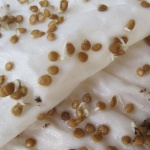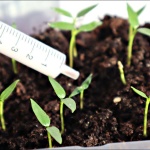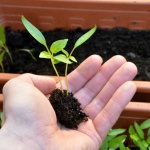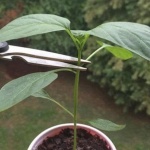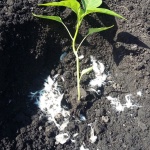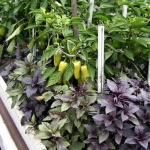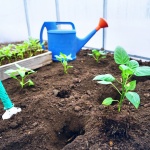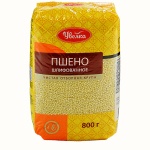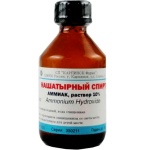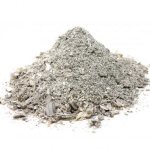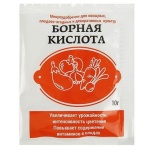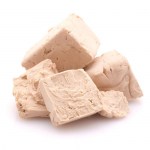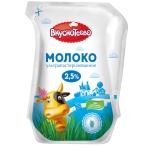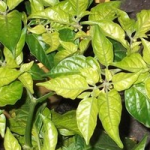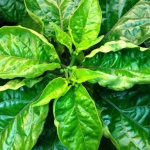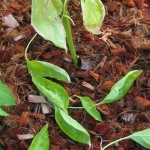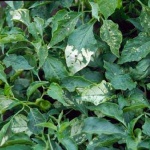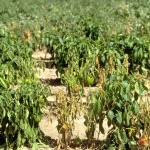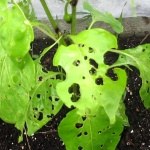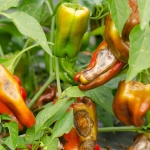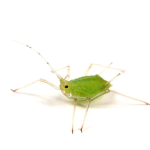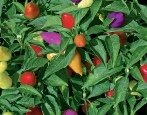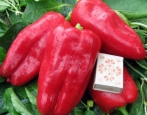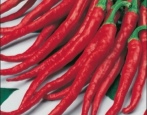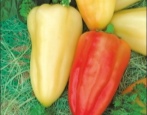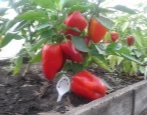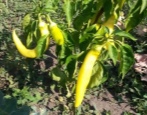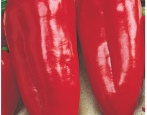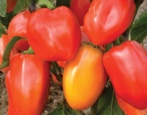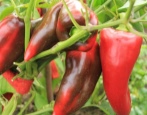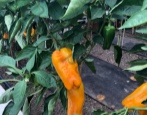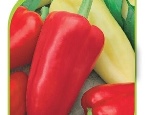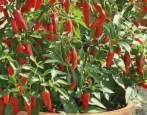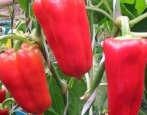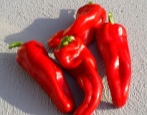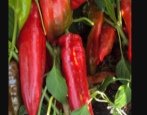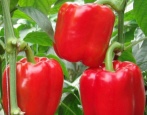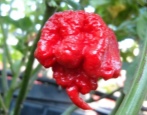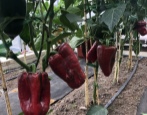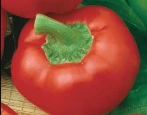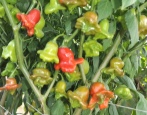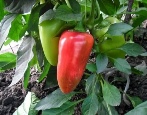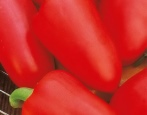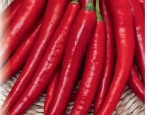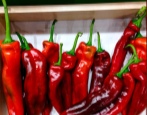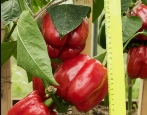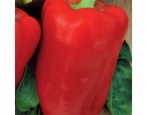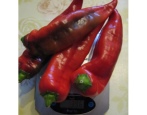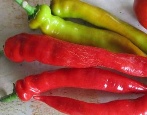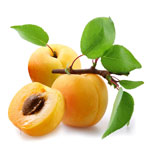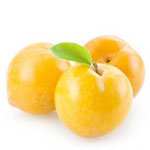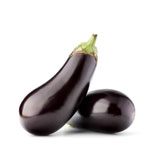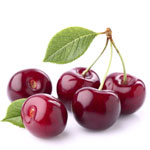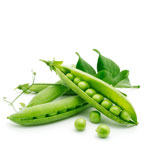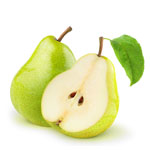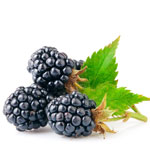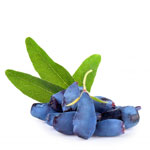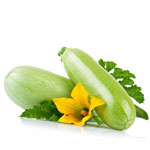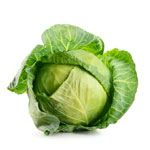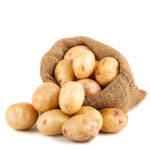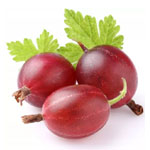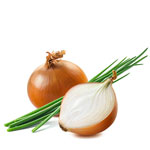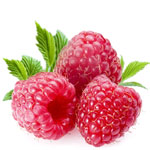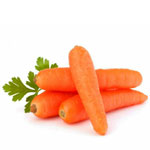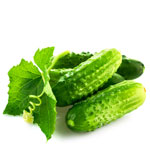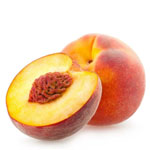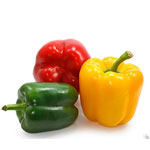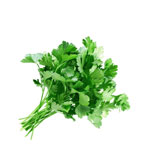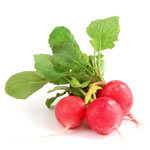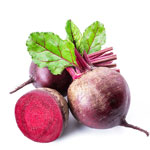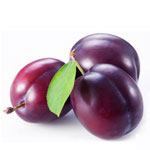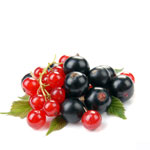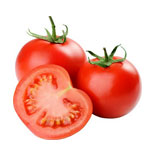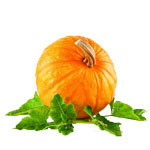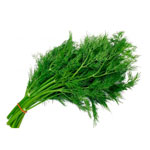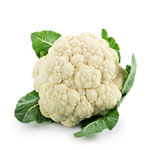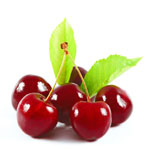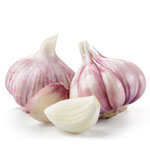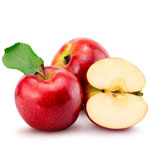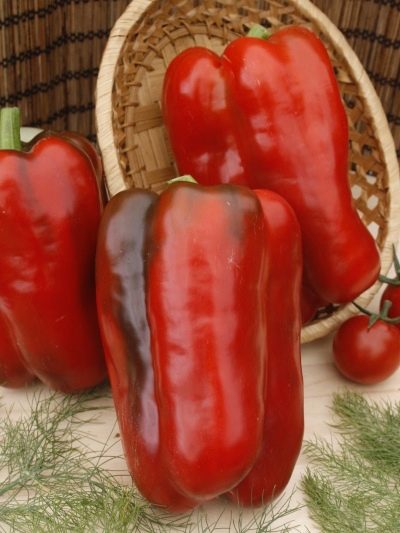
- Bush height, cm: 70-80
- Growth type: medium-sized
- Fruit shape: cuboid-prismatic
- Fruit weight, g: 300-400
- Fruit color: in technical ripeness - dark green, in biological ripeness - red
- Ripening terms: mid-season
- Fruit size, cm: length 18-20
- Yield: high
- Average yield: 8-8.5 kg / m2
- Appointment: for fresh consumption, for all types of processing
Sweet peppers are very popular among gardeners. Such varieties not only have an interesting taste, but also have a quick ripening period. Pepper Star of the East has excellent characteristics and beautiful appearance, which attracts many summer residents.
Breeding history
Pepper Star of the East is an amalgamation of several subspecies of sweet pepper, which were developed by the Russian breeding company SeDeK. All of them belong to the category of hybrids, and there are about 11 colors in total. The most popular are:
Orange Star of the East;
The Star of the East is purple;
The star of the East is giant red.
Let's take a closer look at the Giant Red Star of the East.
Description of the variety
The bush is small, medium-sized. The length reaches 70-80 cm. The crown is formed semi-spreading, but very powerful. The leaves are wide, rounded, slightly narrowed at the tip. The plates are delicate, soft to the touch, with a slight roughness. Color - light green, glossy.
The buds are white, from 7 to 10 pieces are formed on the bush.
Characteristics of the appearance of plants and fruits
The fruits are very large. The average length is from 18 to 20 cm. Vegetables can be cuboid in shape, but there are also prismatic trihedrons. The mass of one pepper is from 300 to 400 g. If the crop weighs in the region of 160-200 g, then, most likely, the variety Zvezda Vostoka red was purchased. A giant cannot have small fruits.
Unripe peppers are dark green in color, while fully ripe peppers acquire a deep red color. The surface of the skin is dense, glossy.
The wall thickness is 0.9-1.1 mm. The pulp is juicy and very firm. A small number of small seeds are formed inside.
Due to its good keeping quality and external data, the variety is well transported over long distances, subject to all standards. The fruit should be stored in a dry and cool place. The shelf life is up to 3 weeks.
Purpose and taste
The rich and pronounced sweet taste of vegetables is noted. The bitter aftertaste is completely absent. The aroma is delicate, tart, but not very expressive.
The fruits have a universal purpose, so they can be eaten fresh, used for making salads, first and second courses, as well as for freezing.
Ripening terms
The culture belongs to mid-season varieties. From the rise of seeds to the beginning of fruiting, an average of 120-130 days pass.
Yield
Pepper Star of the East giant red has a high yield. On one bush, from 8 to 15 peppers can form. Average yields from 1 m2 are 8-8.5 kg.
Landing scheme
For better crop growth, a planting pattern of 70x40 cm is chosen.
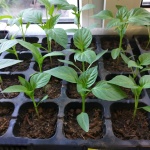
To get a large and tasty harvest of pepper, you need to take care of the seedlings in advance. When growing pepper seedlings, you need to correctly determine the sowing time, pre-sowing seed treatment, prepare the necessary container and soil.
Growing and care
Pepper Star of the East giant red is pre-germinated. The seeds are prepared in advance and are planted in February.
It is necessary that approximately 65-70 days pass between sowing and planting in the ground.
Many gardeners purchase special ready-made soil mixtures for seedling boxes. Some summer residents harvest all the material on their own. It is worth remembering that when self-collecting, the soil must be calcined in an oven at a temperature of 150 ° C for 15-20 minutes to disinfect it.
The seed also needs to be processed. The seeds can be soaked in a weak solution of potassium permanganate or "Fitosporin". Then they must be soaked in a growth stimulator for about 5-6 hours. Some gardeners also recommend germinating the seeds in a damp cloth or gauze (5-10 days) until they hatch. Only then can they be sown in boxes.
The soil before sowing must be abundantly moistened. Shallow pits (1 cm) are made around the entire perimeter with a distance of up to 3 cm between them. After sowing, the land is leveled, and everything is covered with foil. The boxes are removed to a warm room with a temperature of up to 24 ° C.
After the seeds are completely hatched, the film is removed, and the boxes are placed on the windowsill. It is necessary to ensure that there is enough sunlight. On average, daylight hours should be 14-16 hours. For supplementary lighting, many purchase special UV lamps.
Seedlings are watered with exceptionally warm water. And the top dressing is applied in liquid form 1-2 times for the entire growing period in boxes.
Before planting seedlings in open ground, the seedlings are taken out for acclimatization outside.
The preparation of the place is done in advance. The site is dug up and fertilized with humus, wood ash, useful minerals are introduced. The soil is also treated for pests. It can be a solution of potassium permanganate (potassium permanganate).
The place should be sunny and completely sheltered from the wind. Some gardeners use warm beds for growing peppers, claiming that this increases yields several times.
Culture care is as follows:
watering (once every 4 days);
top dressing (3 times per season);
loosening the soil and removing weeds;
tying up;
crown formation;
preventive spraying.
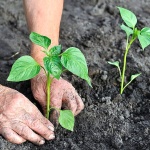
To harvest a tasty and rich harvest of pepper, you need to comply with all the conditions of agricultural technology, and proper care begins with planting plants. Before planting pepper in open ground, it should be prepared. It is also important to take care of the seedlings and planting space in advance.
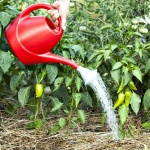
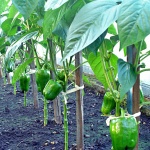
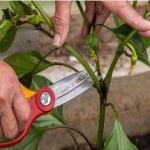
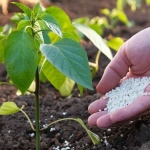
For good growth of pepper bushes and active fruiting, you need to regularly apply mineral and organic fertilizing to the soil. It is necessary not only to choose the right formulations, but also to use them at the right stage in the development of culture. The frequency of top dressing is always individual. It depends directly on the composition of the land on your site. The poorer the soil composition, the more often you will need to feed the pepper.
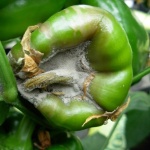
Pepper is one of the most common vegetables in home gardens. This culture is quite stable and unpretentious. However, under certain conditions, this plant can suffer from infections and harmful insects. Before treating peppers for diseases or pests, you need to find out the cause of the problem, otherwise the treatment may be ineffective.
